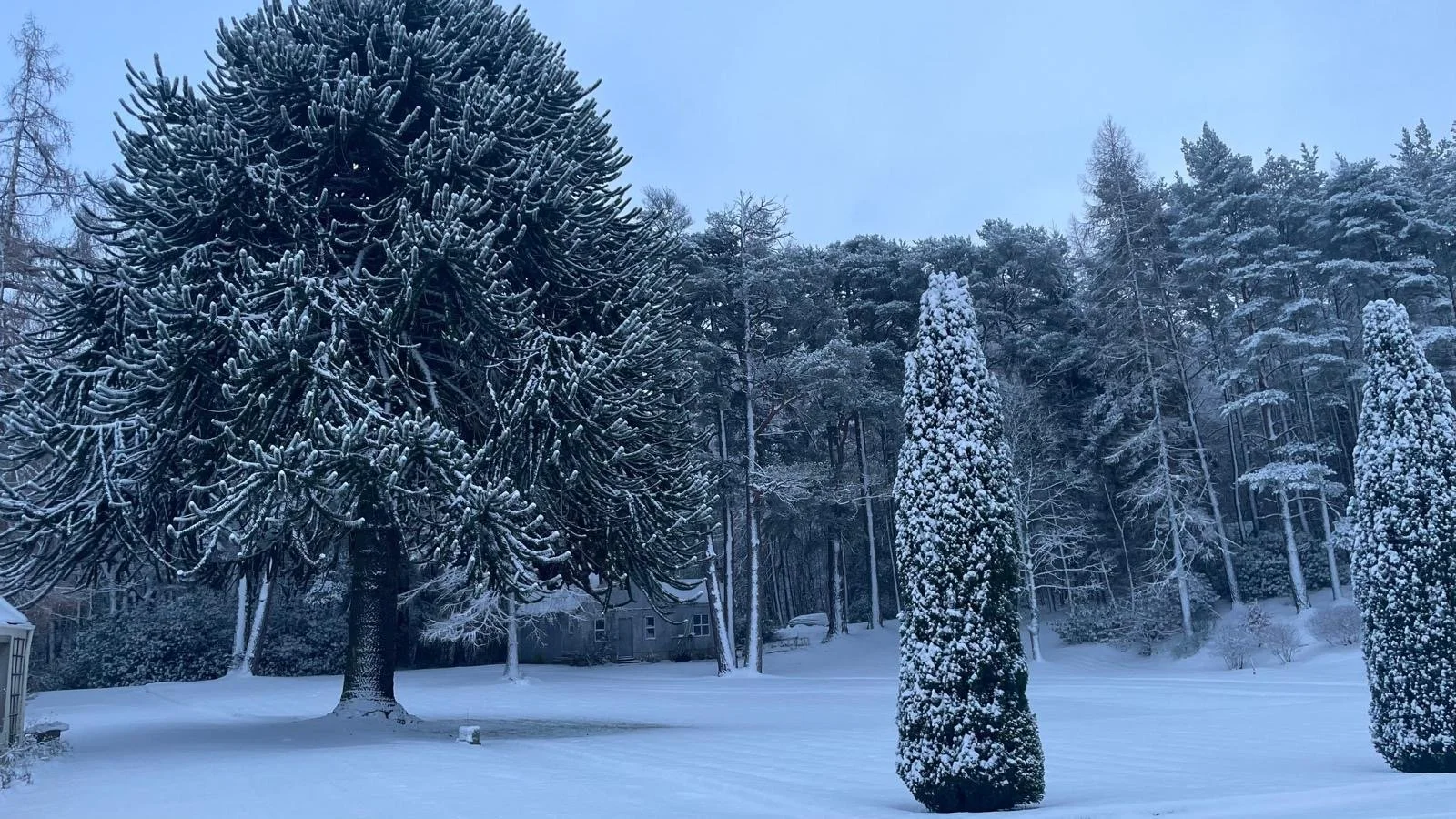
NATURE
Woodlands
The woodlands at Loch na Bo mix native and non-native trees. Scots pine, oak, birch, and rowan dominate, with Norway spruce and Douglas fir introduced in the 19th and 20th centuries. Many of the oldest pines and oaks are more than a century old, creating a mature canopy that shelters a rich variety of plants and fungi.
On the ground, guests will find ferns, bracken, mosses, lichens, and fungi, alongside woodland plants such as bluebells, wood-sorrel, tormentil, creeping lady’s-tresses, and heath bedstraw. Seasonal highlights include snowdrops in late winter, bluebells in spring, and heather and sorrels through summer and autumn. Invasive species such as Himalayan cotoneaster and giant hogweed are present in some areas and are carefully managed.
Fungi thrive in the shaded woodland floor. Highlights include Coral Spot, Candlesnuff fungus, Dark Crottle, chanterelles, and crotal rèin-fhèidh.
At the front of the house stands a mature Monkey Puzzle tree (Araucaria araucana), a striking reminder of the Victorian passion for exotic plantings. Native to South America and once a prized ornamental tree in grand estates, it remains a rare and distinctive feature in the Highlands, its spiny, geometric branches immediately recognisable.
A network of trails makes these habitats easy to explore, from lochside walks to deeper forest paths, each offering a different view of the landscape through the seasons.
The Loch
At the heart of the Estate lies the freshwater loch that shapes both the landscape and the atmosphere of Loch na Bo. Its still waters mirror the surrounding woodland and skies, shifting in character with the seasons, from misty autumn mornings to frozen winter edges.
The loch supports a wide range of aquatic and marginal plants, including pondweeds, bulrush, bottle sedge, bogbean, marsh cinquefoil, shoreweed, creeping buttercup, marsh-marigold, and water horsetail. Introduced species such as Canadian waterweed and American skunk cabbage are carefully monitored to protect the balance of the habitat.
The shoreline changes throughout the year. In spring, cuckooflower and snowdrops brighten the damp edges, while summer brings reeds and sedges to their fullest. By late autumn, fungi and lichens become more visible on fallen wood along the waterline.
Footpaths follow parts of the shoreline, offering open views across the water as well as quiet access to sheltered bays. These walks reveal the loch’s many moods, calm and reflective at first light, alive with movement at dusk.
Open Fields & Gardens
Beyond the loch and woodland lie areas of open pasture and meadow, where tufted hair-grass grows alongside plants such as white clover, creeping buttercup, tormentil, and common sorrel. In summer, these fields are bright with wildflowers, including cuckooflower, heath bedstraw, and common dog-violet, which attract pollinators and add colour to the wider landscape.
Closer to the house, the gardens blend historic plantings with naturalised growth. Rhododendron, honeysuckle, and snowdrops provide seasonal displays, while the lawns and borders flow seamlessly into the surrounding countryside.
The Estate also maintains a greenhouse and fruit cage, continuing a long Highland tradition of producing fresh food on site. The greenhouse supplies tomatoes, chillies, and new potatoes. In the fruit cage and beds yield beans, peas, salad greens, beets, carrots, onions, and cabbages. A wide variety of berry bushes thrive here, too, including strawberries, raspberries, gooseberries, blueberries, wine berries, and blackberries.



